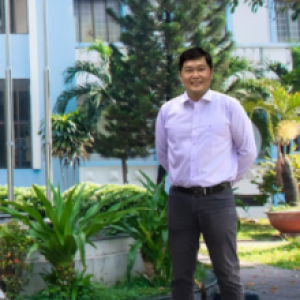Search Papers
5 papers
OVERVIEW OF SUBMERGED CULTURE AND THE BIOLOGICAL ACTIVITIES OF MEDICINAL MUSHROOM SPECIES
Nguyen Thi Ngoc Nhi, Dang Thanh Trung
Submerged cultivation of medicinal mushrooms is receiving increasing attention and is considered an effective alternative to traditional substrate cultivation methods for producing fungal mycelial biomass and bioactive metabolites with diverse applications. This method allows for the control of culture environment conditions, enabling more efficient synthesis of bioactive compounds such as polysaccharides, triterpenoids, cordycepin, polyphenols, etc. Furthermore, the bioactivity of these compounds, including antioxidant, anticancer, antibacterial, and immunomodulatory effects, further emphasizes the potential of producing medicinal mushroom biomass by submerged cultivation in the pharmaceutical and functional food industries. Submerged cultivation is considered a promising alternative to traditional mushroom fruiting body cultivation because it offers better control over culture conditions and product quality, as well as shorter cultivation times. Submerged fungal cultivation has significant industrial potential; however, there are still challenges in optimizing production yield and scaling up the process for industrial application. The successful application of this method on a commercial scale depends on increasing product yield and developing new production systems to address the issues related to submerged mushroom cultivation techniques. Although many researchers are making efforts to produce bioactive metabolites from fungi, the physiological and technical aspects of submerged cultivation still require extensive and long-term research.
OVERVIEW OF MORPHOLOGY, DISTRIBUTION, CHEMICAL COMPOSITION, BIOLOGICAL ACTIVITIES AND CULTURE MEDIUM OF Xylaria nigripes
Nguyen Thi Ngoc Nhi, Tran Minh Trung
Xylaria nigripes is a rare medicinal mushroom in the Xylariaceae family, which has long been used in traditional medicine to aid in treating conditions such as insomnia, neurasthenia, and inflammation. This fungus usually grows in an environment characterized by termite nests. Recent studies have shown that X. nigripes contains many valuable biological compounds such as polysaccharides, nucleosides, and sterols, which provide important biological effects, such as antioxidants, liver protection, immune system regulation, and diabetes treatment. In addition to pharmacological potential, many research works have focused on developing X. nigripes biomass kernel techniques under artificial culture conditions, in order to optimize growth and accumulation of active ingredients. These results not only contribute to clarifying the application potential of this mushroom in the pharmaceutical field but also create a scientific foundation for the sustainable exploitation of this rare medicinal resource.
Sesuvium portulacastrum was shown to absorb sodium (Na+) and clor (Cl-) from the soil and accumulate it within its tissues. Therefore, it was chosen as a good plant for the phytodesalination of saline soils. The present study aimed to evaluate plant capacity to accumulate cloride ions and the potential to desalinize in saline soil medium of this halophyte. The results show that S. portulacastrum has a high tolerance at salt concentrations from 0.5% - 5% in growth terms of stem height, number of branches level 1, root length, and fresh biomass. Plants absorb a marked Cl- ions content clorideine and accumulate in roots, stems, and leaves. The efficiency of salt removal is 92% in the treatment of NaCl 1%. These results contribute to reducing soil salinity, so it is possible to apply sea buckthorn to treat saline soil environments.
An review on bioethanol production using lignocellulosic biomass
Trương Nguyễn Phương Vi
Declining supplies of fossil fuels, increasing population, global industrialization and demand for transportation fuels has triggered an increase in the demand for renewable energy sources. To address such problems most of the green research in the recent years has focused on the development of bioethanol (23 MJ/L) as a substitute to conventional gasoline (34.3 MJ/L) based fuels owing to the similarity in energy density values in addition to several other advantages (American Council on renewable energy, 2010). Second-generation biofuels are derived from lignocellulosic biomass or woody crops, mostly coming from agricultural residues. Extraction of fuel from such biomass is difficult because of their recalcitrant nature (corn stover, rice straw, wheat straw, sugar cane and sweet sorghum). Lignocellulosic fuel has the potential to solve several problems (food competing with fuel) that are currently associated with first generation biofuels. Moreover, lignocellulosic fuels can supply a larger proportion of the global fuel leading to sustainability at lower cost, and with greater environmental benefits (Liz Marsall, 2009). The production of ethanol from the complex sugars in leaves and stalks is a promising strategy to radically broaden the range of possible ethanol feedstock.
Keywords: lignocellulose, bioethanol, biomass, pretreatment, hydrolysis, fermentation.
Effects of milling combined with extremely low-liquid ammonia (ELLA) pretreatment to enhance enzymatic hydrolysis of corn stover
Trương Nguyễn Phương Vi
Lignocellulosic biomass is one of the largest carbohydrate sources and has huge potential for biofuels production. However, the problem with lignocellulosic feedstock is that it has useful sugars locked in by lignin, hemicellulose, and cellulose. Some kind of pretreatment; therefore is needed to make carbohydrate accessible which later can be fermented to produce ethanol. The results from this research indicated that the yields of glucan (93%) and xylan (82.8%) were improved by using milling combined with ELLA pretreatment. The optimal enzymatic hydrolysis efficiencies were obtained under 10 min for ball milling time, pretreatment at 1 h, temperature at 150°C, S/L = 0.5 and ammonia loading at 0.25 g-NH3/g-biomass. This method reduced the pretreatment time and short milling time and thus has potential of reducing the energy consumption and promising the application in the large scale.
Keywords: corn stover, milling pretreatments, ammonia pretreatment, bioethanol.
Publication Information
Publisher
Thu Dau Mot University, Viet Nam
Editor-in-Chief

Assoc. Prof. Nguyen Van Hiep
Thu Dau Mot University
Thu Dau Mot University
Editorial Board

Assoc. Prof. Le Tuan Anh
Thu Dau Mot University
Thu Dau Mot University

PhD. Nguyen Quoc Cuong
Thu Dau Mot University
Thu Dau Mot University

PhD. Doan Ngoc Xuan
Thu Dau Mot University
Thu Dau Mot University

PhD. Nguyen Khoa Truong An
Thu Dau Mot University
Thu Dau Mot University

Assoc. Prof. Nguyen Thanh Binh
Thu Dau Mot University
Thu Dau Mot University

PhD. Le Thi Thuy Dung
Thu Dau Mot University
Thu Dau Mot University

PhD. Ngo Hong Diep
Thu Dau Mot University
Thu Dau Mot University

PhD. Nguyen Duc Dat Duc
Ho Chi Minh City University of Industry and Trade
Ho Chi Minh City University of Industry and Trade

Assoc. Prof. Nguyen Van Duc
Animal Husbandry Association of Vietnam
Animal Husbandry Association of Vietnam

PhD. Nguyen Thi Nhat Hang
Department of Education and Training of Binh Duong Province
Department of Education and Training of Binh Duong Province

PhD. Nguyen Thi Cam Le
Vietnam Aviation Academy
Vietnam Aviation Academy

PhD. Trần Hạnh Minh Phương
Thu Dau Mot University
Thu Dau Mot University

M.A. Pham Van Thinh
Thu Dau Mot University
Thu Dau Mot University

PhD. Nguyen Thi Lien Thuong
Thu Dau Mot University
Thu Dau Mot University

Prof. Le Quang Tri
Can Tho University
Can Tho University

Prof. Banh Quoc Tuan
Thu Dau Mot University
Thu Dau Mot University

